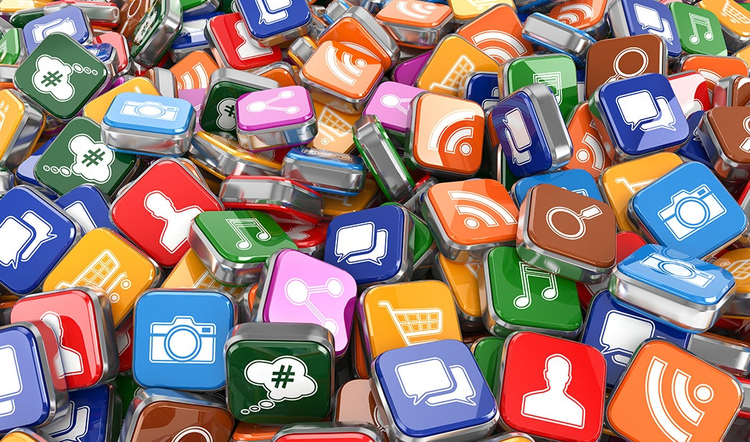There Doesn’t Always Need To Be An App For That
As operating systems improve, brands have unprecedented opportunity to leverage native app experiences, turning mobile wallets, QR codes, and more into valuable channels for engagement.

This article is part of CMO.com’s March/April series about emerging technology. Click here for more.
Remember the race to mobile apps, when every brand believed a standalone experience was a must-have? But it wasn’t long before brands recognized the many challenges that come with app implementation, including getting consumers to take the extra step of downloading an app and then use it more than once.
However, with the introduction of iPhone X and new native technologies, a change in the user experience is imminent. As operating systems improve, brands have unprecedented opportunity to leverage native app experiences, turning mobile wallets, QR codes, and more into valuable channels for engagement.
Maximizing Mobile Wallets
The opportunity for mobile wallets goes beyond digital payments and storing airline tickets. From time-sensitive coupons that are sent in-store to personalized deals customized to shoppers’ favorite products and preferences, mobile wallets offer a treasure trove of deals for consumers. For brands looking to encourage engagement without being tied to a dedicated app, mobile wallets offer ample opportunity.
According to Vibes’ “2017 Mobile Consumer Report,” saving loyalty cards to phones is considered the most desired mobile wallet feature; such an integration allows brands to send targeted coupons, incentives, and special offers in the right place and at the right time. Consumers’ interest is noteworthy, too, with 73% expressing interest in receiving mobile wallet content from retailers, restaurants, and brands.
While it could be difficult to convert online traffic to in-store sales, mobile wallets can move the needle. Equipped with beacon technology, mobile wallets alert users of special offers when users are in proximity to stores. They also enhance rebate-focused solutions that deliver a percentage back on purchases. In the past, printed rebate receipts were easily lost or forgotten. With mobile wallets, these offers can easily be redeemed, delivering swift, seamless value to shoppers.
The QR Code Connection
QR codes are making a comeback. Though introduced only a few years ago, QR codes faced a number of setbacks, with consumers required to download separate scanners to access content. Because of this friction, QR codes were overpowered by more accessible technology that offered engagement without an extra step.
But the tide changed with iOS 11, when Apple introduce a code reader as part of its camera, making it easier for consumers to use and find. Since then, QR codes have seen a rise in engagement. About 1.3 billion mobile QR code coupons were redeemed last year, and that number is expected to increase to 5.3 billion by 2022, according to Juniper Research.
Also of note, the rollout of Google Lens to Android phones (running the latest version of Google Photos) enables users to scan bar codes and QR codes, as well.
QR codes offer brands the opportunity for seamless purchases, engagement, content, and experiences. Disney and Lucasfilm, for example, in September launched an in-store treasure hunt driven by QR code-enabled augmented reality. Star Wars fans were invited to visit participating retail stores and scan QR codes on in-store life-size characters from “The Last Jedi” to learn more about key characters.
QR codes can also turn packaging into digital experiences—something we’ve seen even before experiences became the huge focus they are today. By scanning codes embedded on packaging, consumers can gain access to recipes, cooking videos, and more, offering a rich brand experience. QR code-based payment systems that enable in-store mobile checkout—as, for example, seen in both Walmart and Target for several years now—can also ease experiences.
Mobile Web 2.0
The mobile web has been a consistent presence in consumer engagement—and it’s now better than ever. Progressive web apps (PWAs) are quickly gaining traction given their lower hurdle for adoption, access to native hardware features like cameras, and notifications that rival those of native apps. With integrations that allow consumers to better immerse themselves in the brand experience, the mobile web has enticed brands to go back to basics and refine engagement from the ground up.
JCPenney, for example, recently leveraged the mobile web within its Jacques Penné campaign. To reframe its brand perception and inspire holiday gifting, the department store launched a two-day pop-up shop in New York. Shoppers unable to attend could access a 360-degree virtual reality feature to make purchases from the Jacques Penné shop on desktop and mobile. Visually stunning and optimized for purchase, the mobile web experience effectively transported shoppers to a new digital world, enhancing brand engagement.
For brands looking beyond traditional engagement strategies, the time for experimentation has never been brighter. Rather than adding a layer of complication with mobile apps, brands can lean on the native technologies consumers already have in-hand and be proactive about developing strategies across mobile wallets, QR codes, and the mobile web.
With an open mind and a little testing, native experiences will not only provide frictionless transactions, but will create richer relationships between brands and consumers.